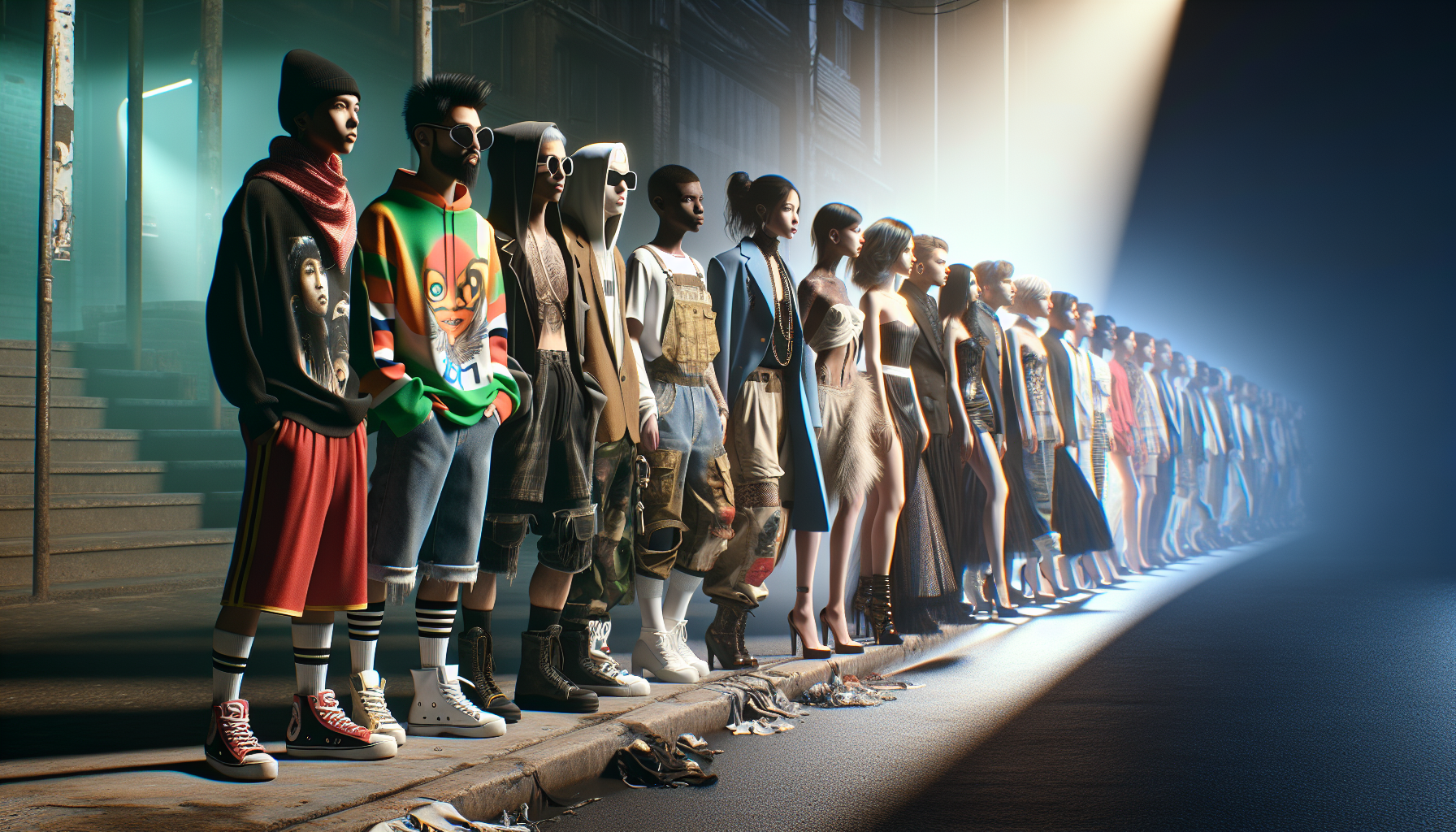Streetwear’s journey from the fringes of fashion to its current status as a mainstream staple is as eclectic and storied as the designs that characterize the genre. This contemporary mode of apparel, which includes casual clothing such as t-shirts, hoodies, sneakers, and caps, was born out of the subcultures of the 1980s and 1990s – notably skate, surf, hip-hop, punk, and burgeoning graffiti scenes. Today, it dominates the runways and has become a crucial segment of the global fashion industry.
Origins of Resistance and Subculture
The genesis of streetwear is deeply rooted in a spirit of rebellion and a desire to stand out. In the urban landscapes of New York and Los Angeles, groups of skaters and artists created clothing that reflected their lifestyles, attitudes, and the music they listened to. These communities, often marginalized, used their attire to communicate cultural and social affiliations. Brands such as Stüssy, a surfboard company, began selling printed t-shirts and gaining an underground following. Their branding tapped into the identity of the youth culture, promoting a look contrary to the mainstream and widely embraced by like-minded individuals.
Streetwear Breaks Into the Fashion Scene
Transitioning from a countercultural statement to a fashion trend, streetwear started to catch the attention of the broader market in the late 1990s and early 2000s. As hip-hop music increased in popularity, so did the associated fashion. Artists and influencers began to don outfits emblematic of the streetwear ethos, infusing luxury with casualness. The embrace of logomania, or the flaunting of brand logos, became a key component of streetwear’s aesthetic. The trend caught on rapidly, leading to a crossover between high fashion and streetwear, with high-end designers incorporating street style into their collections.
Collaborations and the Transformation of Streetwear
Perhaps the most profound shift in the ascension of streetwear was the emergence of collaborations between streetwear brands and luxury fashion houses. Pioneering collaborations, such as those between Supreme and Louis Vuitton, have blurred the lines between high-end and everyday fashion. These collaborations were not merely about combining logos; they represented a fusion of different fashion philosophies, consumer bases, and price points. The success of such partnerships has been a testament to the versatility of streetwear and its widespread acceptance. The exchange of street credibility for fashion expertise facilitated an appeal to a broader audience, helping to push streetwear into the limelight.
The Digital Influence
The role of the internet and social media cannot be understated in the evolution of streetwear. Platforms like Instagram and Twitter have provided a space for streetwear devotees to showcase their style, influencing followers across the globe and amplifying the trend beyond urban centers. Online communities have united fans and have been instrumental in exciting brand launches and exclusive drops. The limited-edition releases and the lure of scarcity have become an integral part of streetwear’s allure, driving up demand and changing the notion of value within the fashion industry. Moreover, e-commerce has allowed local brands to reach a global market, enabling the proliferation of streetwear worldwide.
The Future of Streetwear in Fashion
Today, streetwear is not just a fashion choice but a lifestyle that reflects the values of authenticity, community, creativity, and individual expression. As it integrates with mainstream fashion, streetwear continues to innovate, with designers exploring sustainability, cultural inclusivity, and technological advancements in apparel. The adaptability of streetwear, alongside the rise of athleisure and the comfort-first approach to dressing, suggests that its influence will endure.
Conclusion
The rise of streetwear from underground scenes to its mainstream embrace is a narrative of cultural mash-ups, innovation, and a challenge to the traditional fashion establishment. It is a testament to the idea that fashion is not just about clothing but a language communicating identity and community affiliation. With its blend of style, functionality, and cultural significance, streetwear has secured its position in the fashion hierarchy. As we look toward the future, this multi-faceted phenomenon continues to evolve, mirroring the dynamically changing landscape of society itself. It is a powerful example of how grassroots movements can reshape industries and redefine style parameters.

